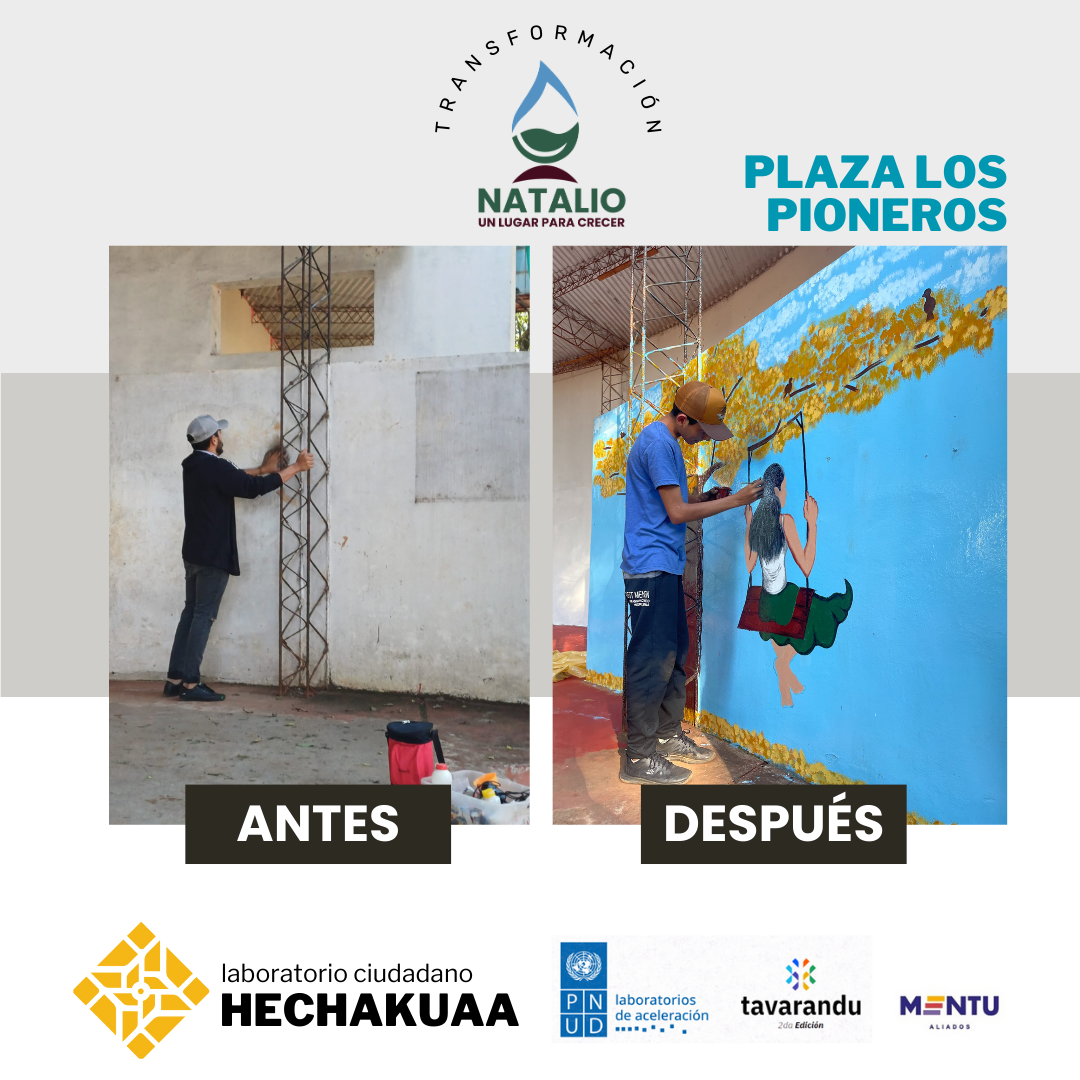Disclaimer:
Please be aware that the content herein has not been peer reviewed. It consists of personal reflections, insights, and learnings of the contributor(s). It may not be exhaustive, nor does it aim to be authoritative knowledge.
Overview
Prepared by (Name of the experimenter)
Cristhian Parra
On date (Day/Month/Year)
20/02/2024
Current status of experimental activity
Completed
What portfolio does this activity correspond to? If any
participation, social capital and trust
What is the frontier challenge does this activity responds to?
builiding innovation capacities
What is the learning question(from your action learning plan) is this activity related to?
What is the space of opportunity to design, develop and implement binding participatory processes in decision-making processes of interest for citizens at different levels (community, city, region, country)?
Please categorize the type that best identifies this experimental activity:
Pre Experimental (Trial and erros, prototype, a/b testing)
Which sector are you partnering with for this activity? Please select all that apply
Public Sector, Civil Society/ NGOs
Please list the names of partners mentioned in the previous question:
Pilar Municipality
Natalio Municipality
Mentu civil NGO
Design
What is the specific learning intent of the activity?
Starting from the premise that the citizen participation systems we are familiar with need to evolve towards more proactive, creative, and collaborative models. In this context, we are developing participatory methodologies with municipal officials to initiate conversations that activate collective intelligence and enable collaborations for authentic co-creation between the municipal government and the citizens.
The activation of citizen laboratories was part of the Tavarandu Program, driven by the UNDP Acceleration Lab, with the objective of contributing to increasing trust, quality, diversity, and the scope of citizen participation in local planning processes. This was achieved through the incorporation of participatory methodologies in municipal planning and intervention processes.
What is your hypothesis? IF... THEN....
We had two main hypotheses:
IF we provide training to municipal officials, THEN the use of participatory methodologies in the municipality's planning processes will increase.
IF trained municipal officials facilitate citizen spaces for groups of adults and adolescents, THEN trust in the municipal institution will increase, and the quality, representative diversity, and scope of citizen participation in local planning processes will also increase.
Does the activity use a control group for comparison?
No, it does not use a control group
How is the intervention assigned to different groups in your experiment?
Non-random assignment
Describe which actions will you take to test your hypothesis:
We conducted an experiment with a control group for a specific and complementary activity aimed at adolescents and to measure the impact on trained officials. To gauge the learnings from the citizen laboratories, we employed dialogue techniques to measure the satisfaction of the involved stakeholders, and a results log to measure the completion of the actions defined in the participatory design space.
What is the unit of analysis of this experimental activity?
Municipalities
Please describe the data collection technique proposed
We resort to the primary and age-old tool of civic engagement, which is conversation. But not just any conversation. We aim for expressions enriched with a high quality of listening, curiosity, and imagination.
A simple circle and a spoken object constitute our collective intelligence machinery, where we share our perceptions, experiences, and knowledge to create meaning and situated memory in each context. In the circle, there is no hierarchy, and both the words and the silences of each participant carry equal weight.
In each circular conversation space, we posed four questions to listen to each other from a reflective standpoint, stimulating a transformative participatory process: 1. What is not a participatory process? 2. How do we like to converse? 3. What does collaboration entail? 4. What conditions do we need for co-creation? In this way, we strive to provide collective responses to individual expectations and needs.
Results
Was the original hypothesis (If.. then) proven or disproven?
It was proven. The planned activities in the citizen laboratories were successfully completed, facilitated partially by trained officials, and with citizen participation, while not massive, proved to be effective. Additionally, there was a very favorable communicational impact. In the Municipality of Natalio, the roadmap consisted of two training sessions, two follow-up and preparation sessions, a Civic Training Day for adolescents, two open Citizen Laboratory meetings, and a community activation day at Plaza Los Pioneros. This included 1. Inauguration of the light roof, 2. Participatory refurbishment of playground equipment, 3. Creation of a commemorative mural, and 4. Installation of a street library. The latter activity was mostly self-managed.
In the Municipality of Pilar, activities included two training sessions, virtual follow-up for preparation and outreach, virtual mapping of citizen organizations, a central Citizen Laboratory meeting, a day for designing activities, and a presentation event for the collaborative Tourist Circuit developed within the framework of the laboratory.
Do you have observations about the methodology chosen for the experiment? What would you change?
From design to results, how long did this activity take? (Time in months)
What were the actual monetary resources invested in this activity? (Amount in USD)
An approximate investment of USD 24k.
Does this activity have a follow up or a next stage? Please explain
A new learning cycle with all the components of the program is underway, this time with a greater connection with the Local Development Plans, and articulating the training in fewer cities, but with more support on the ground.
Is this experiment planned to scale? How? With whom?
First, the decisions made in the labs were implemented by the municipalities that organized them (influence at local level). Second, the methodology of the lab was incorporated in a project with the Electoral Tribunal and AECID, as part of a civic education program.
Learning
A well-crafted invitation ensures high-quality, highly creative, representative, and diverse participation. The next step is to create conditions for listening, hosting, and mobilizing each participant's ideas, in a brief and intentional manner. To achieve this, we activate play and movement, not only physically but also mentally and emotionally, to accompany what emerges from the citizenry. We aim for the conversational dynamics to inspire and stimulate proposals originating from the community itself, so that everyone feels committed to finding easy solutions that can be implemented with what we already have, what already works, what we agree upon, and what brings us enjoyment.
What do you know now about the action plan learning question that you did not know before? What were your main learnings during this experiment?
Context is crucial; we were told that it's enjoyable to converse in an open space, a warm atmosphere, and a tranquil setting. Having a clear objective helps ensure organized and purposeful conversations with a horizon. It's important to focus on the positive rather than the negative to motivate collective progress.
Conversations sometimes operate on an operational, objective, and pragmatic level. At other times, we engage in more creative discussions, encouraging thinking outside the box and challenging certainties. Each circumstance has its own timing and requires a different language.
We prefer conversations when trust is present, allowing us to open up to others, treating all voices equally, actively listening, expressing opinions, and collaboratively constructing ideas. This occurs when the conversation isn't centered on just one or two individuals speaking, but when many voices are heard without repetition, discussing specific topics and presenting direct ideas.
The attitude of listening, openness, attention, respect, tolerance, sincerity, honesty, face-to-face interaction, eye contact, speaking in an orderly manner, with moderation, frankness, without arrogance, with education, with knowledge, analyzing real problems are some of the aspects mentioned to foster an atmosphere of trust, freedom of expression, and participation. This ensures smooth communication, considering both verbal and non-verbal language, free from political biases.
Conversations become less enjoyable when there is "explaining" (mansplaining, allsplaining), and dialogue is hindered when someone claims to know too much and only dictates. When we feel unseen and unheard, conversations become unappealing. Losing focus is uncomfortable and drains energy.
What were the main obstacles and challenges you encountered during this activity?
Being Present: It is very challenging to comprehend the circumstances and contexts of the municipality's daily management and remotely integrate the citizen lab agenda without forcing, imposing, or overloading the same individuals with tasks. Virtual meetings were complicated, and digital tools were not embraced because they do not yet form part of their management model. All our counterparts have many institutional commitments, and it was challenging to coordinate remotely. The decision-making counterpart had low participation, and the rest were widely dispersed. We understand that virtual aspects need to be moderated and assess what works and what doesn't work in a semi-rural context.



 16Peace, justice and strong institutions
16Peace, justice and strong institutions
Comments
Log in to add a comment or reply.